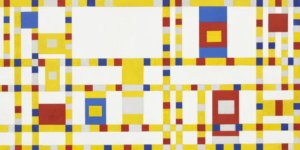“The way to fight is not to reflect horror and put your spirit down. It’s to create something with beauty that gives you hope.” – Marina Abramović
Heralded as the ‘godmother of performance art,’ Marina Abramović has defied convention for the past five decades and orchestrates a symphony of audience reactions through her visceral and confrontational works.
At 76, Abramović continues to captivate the art world with her introspective and audacious work. Her current showcase marks a historic moment as the first female artist to command the prestigious hallowed halls of London’s prestigious Royal Academy in its 255-year legacy.
The exhibition unveils Abramović’s body of work to tell an unconventional narrative. The overture unfolds with a montage of faces—74 videos in communion with Abramović during her iconic MoMA performance, “The Artist is Present.” Notable personas interlace with anonymous aspects, illuminating the artist’s avant-garde expressions and curious relationships with celebrity culture — including her collaborations with superstars Lady Gaga and Jay-Z.
However, Abramović’s retrospective pushes beyond a celebrity-studded narrative. “Rhythm 0,” a six-hour odyssey where the performance artist surrenders to audience whims, invites introspection into societal confines and the human psyche’s complexities. The haunting slides from this performance reveal a raw vulnerability juxtaposed with the public’s often concealed aggression and problematic societal morals.
Spectators navigate reenactments and immersive installations as the retrospective morphs into a mirror reflecting our contemporary consciousness and crescendos into a contemporary experiment, which invites viewers to engage with elemental energies. The grand finale, an incarnation of Abramović’s pivotal “The House with the Ocean View,” invites new artists to inhabit her space, metamorphosing the exhibition into a living testament to the ever-evolving relationship between art, artist, and audience.
In this curated chronicle that closes on January 1st, 2024, the Royal Academy becomes a theater where past and present collide — a powerful testament to the enduring resonance of performance art on the ever-shifting cultural landscape. To prove that point, different works will be reperformed during the run of the exhibition, ensuring that each visit offers a unique experience as no two visits will be the same.
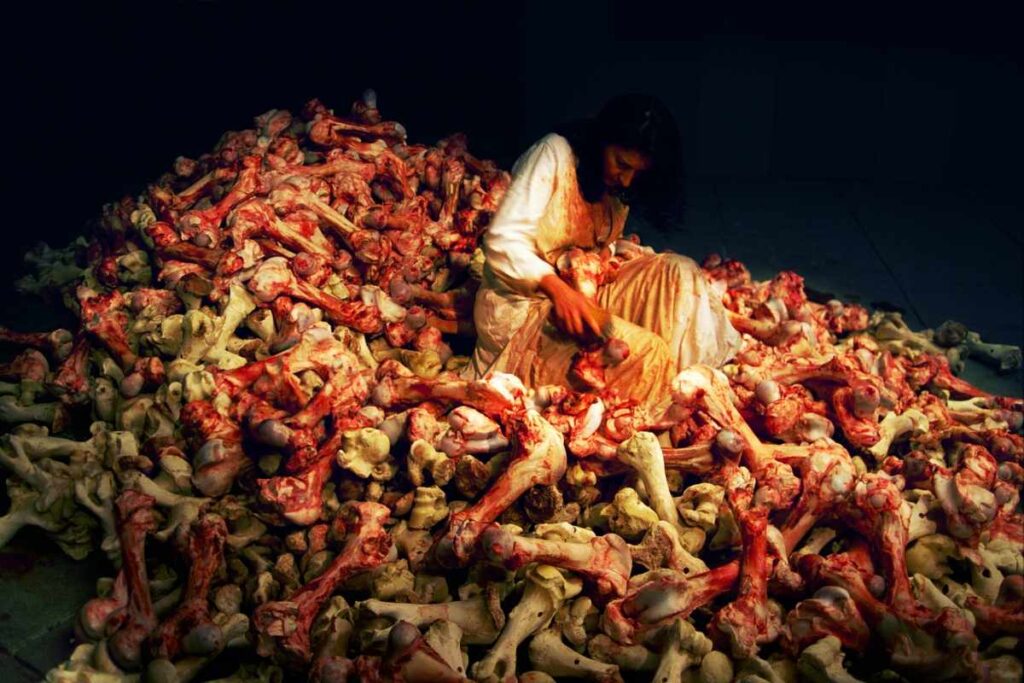
Abramović’s Formative Years and Artistic Awakening
Born in post-World War II Belgrade, Serbia, Abramović’s upbringing was deep-rooted in a political legacy; her parents hailed as decorated Yugoslav partisans who served in the communist government. Raised by her devout grandmother initially, Abramović later returned to her parents’ care where she was subjected to a stifling environment dictated by her strict mother’s stringent rules.
Her artistic inclinations began in childhood, cultivating an early fascination with art. Abramović’s formal education commenced at Belgrade’s Academy of Fine Arts in 1965, continuing with postgraduate studies at Zagreb’s Academy of Fine Arts, ultimately launching her solo career as a performance artist in Novi Sad.
Pivotal to Abramović’s artistic evolution was her marriage to Serbian conceptual artist Neša Paripović. The union was also a convergence of artistic minds. Paripović was known for his avant-garde and conceptual approaches, which fostered an environment that nourished and evolved Abramović’s artistic philosophy. They divorced in 1979 and Abramović continued exploring new avenues in performance art and developing her distinct artistic identity.
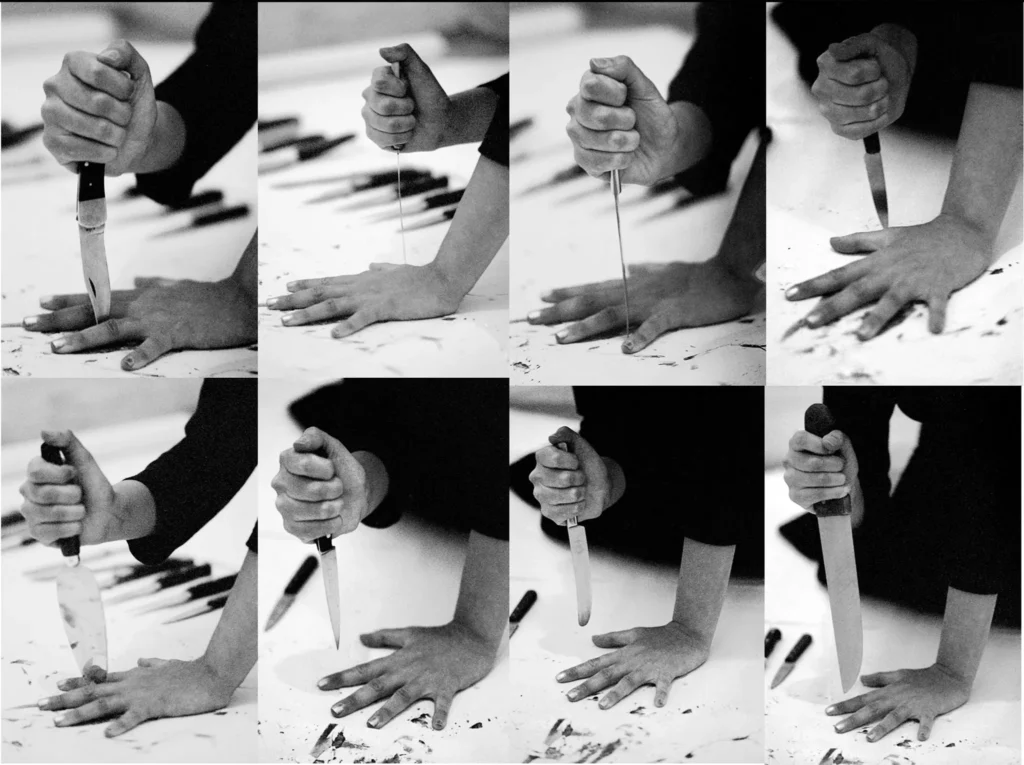
A Journey Through Boundary-Pushing Performances
Abramović’s “Rhythm 10” and “Rhythm 0” performances are two of her seminal pieces from the early stages of her career. Taking place in the 1970s, these two performances showcased her exploration of physical and mental endurance, as well as the relationship between artist and audience. The live art piece “Rhythm 10,” performed in 1973, involved Abramović using knives as tools to explore the boundaries of danger, control, and intuition. In a ritualistic manner, she rhythmically stabbed a knife between her splayed fingers, demonstrating a test of physical skill and precision while portraying the relationship between the body and the tools used.
“Rhythm 0,” executed in 1974, was an even more provocative and intense performance. Abramović placed 72 objects, ranging from harmless items to potentially deadly ones like knives and a gun, on a table. She invited the audience to use these objects on her however they pleased. For six hours, Abramović gave up control and agency of her body to expose her raw vulnerability while revealing the unsettling aspects of human behavior when presented with unchecked power.
While “Rhythm 10” and “Rhythm 0” were groundbreaking works, Abramović’s collaboration with the West German artist Ulay is one of the most storied partnerships in the history of performance art. Their relationship, which lasted from 1975 to 1988, was characterized by a profound exploration of unity, separation, and shared experiences. Together, they weaved themes of relationships and identity. Using their own bodies as canvases, Abramović and Ulay deftly expressed the intricate concepts of human connection, duality, and the boundaries between individuals.
Their collaboration, “The Lovers,” stood as a poignant climax to their artistic and personal journey. Commencing at opposing ends of the Great Wall of China, each traversed an enormous distance towards the other. Their rendezvous in the middle marked a bittersweet farewell and a profound conclusion to their collaborative legacy. The symbolic act of walking towards one another from opposite poles, only to acknowledge their parting, became an eloquent dialogue of human relationships and the beauty of closure.
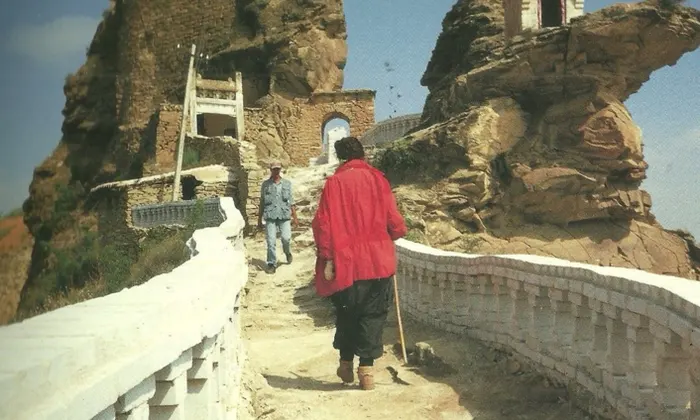
Abramović would soon become widely known for her ability to create profound, visceral experiences through art. She achieved considerable fame through several pivotal works in her career — each contributing to her global recognition as a performance artist. One of the most iconic pieces that significantly contributed to her fame was “The Artist is Present,” presented at the Museum of Modern Art (MoMA) in New York in 2010. The piece was an ambitious and emotionally charged performance where Abramović sat silently at a table in the museum’s atrium. For hours each day, she invited visitors to sit across from her and engage in silent eye contact to form a wordless connection. Over the course of several months, she maintained this intense gaze with participants, demonstrating her sheer endurance and emotional depth. The sheer simplicity of her performance resonated with audiences who were profoundly moved by the vulnerable and introspective space they found themselves immersed in. Some found solace while others broke down in tears — deeply moved by the confrontation of their own perceptions of time and human connection.
Another notable collaborative project was Abramović’s collaboration with pop sensation Lady Gaga for the album “Artpop” in 2013 brought a captivating fusion of performance art and pop music, bridging the gap and blurring the boundaries between the avant-garde and the mainstream. Abramović lent her conceptual expertise and artistic sensibilities to Lady Gaga’s album, adding a unique depth and intellectual layer to Gaga’s music.
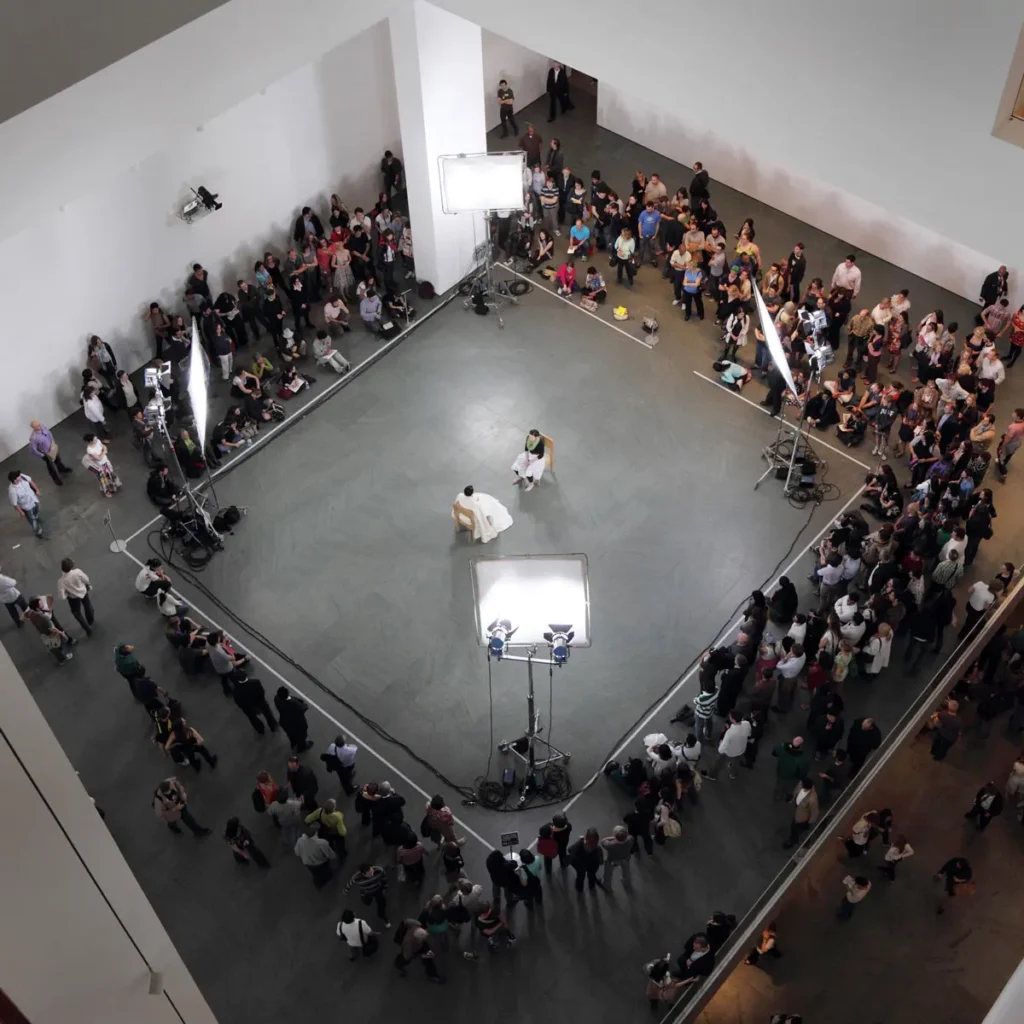
Embracing and Mirroring Abramović’s Guiding Narrative
Amidst the turbulence and peculiarity of contemporary life and the conflicts of the human condition, Abramović advocates for living in the moment, a philosophy inherent in performance art. Her performances empower individuals to make conscious life decisions.
Abramović has made a career confronting her own visceral relationship with fear, pain, and the core of human existence. But it also left her with guiding lights that illuminate her journey through self-discovery, the essence of art, and the business of creativity. Fear, she contends, must be confronted and acknowledged. Through her performances, she mirrors the audience’s fears, creating a transformative experience that challenges her own boundaries. By becoming a reflection for others, she finds liberation and the catalyst for personal growth.
Abramović’s art has become an odyssey into boundless freedom with performances that shatter the boundaries between creator, observer, and participant. Art, to Abramović, transcends the sanctity and assumed safety of isolation. Her radical performances, from living in an open gallery space to pushing the limits of bodily endurance, seek to challenge our perceptions of mundane tasks in our everyday lives. Through Abramović’s performance art, we’re granted a guiding narrative that urges us to explore ourselves.
On the business of art, Abramović underscores the duality between the process of creating and presenting one’s creations. While some possess the energy and skill to navigate both realms seamlessly, others require assistance in comprehending their personal capabilities and aligning them with reality. Therefore, the ability to set realistic expectations becomes pivotal in traversing the path toward recognition and success in the highly competitive art world.
With 55 years of experience in confronting her fears, seeking her place in boundless creativity, and pioneering the genre of performance of art, Abramović has secured a legacy that will undoubtedly endure and inspire future performance artists to discover the power of exchanging pure energy and elevating the spirit.
“I’ve taken my body as object and subject for my work. So my body is not just present as my body but present as a human body. You’re emotionally moved because my body is your body.”

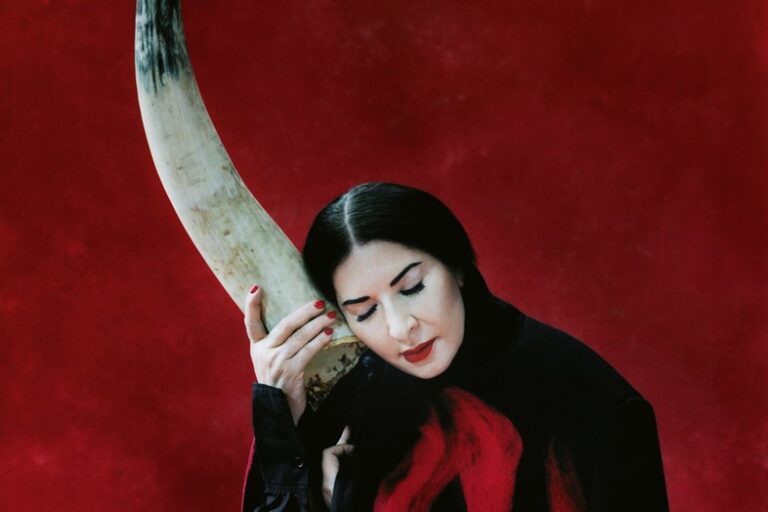

![[Left] Kusama with her piece Dots Obsession, 2012, via AWARE, [Right] Yayoi Kusama (Courtesy Whitney Museum of American Art) | Source: thecollector.com](https://www.artdex.com/wp-content/uploads/2024/04/Left-Kusama-with-her-piece-Dots-Obsession-2012-via-AWARE-Right-Yayoi-Kusama-Courtesy-Whitney-Museum-of-American-Art-Source-thecollector.com--300x172.png)



